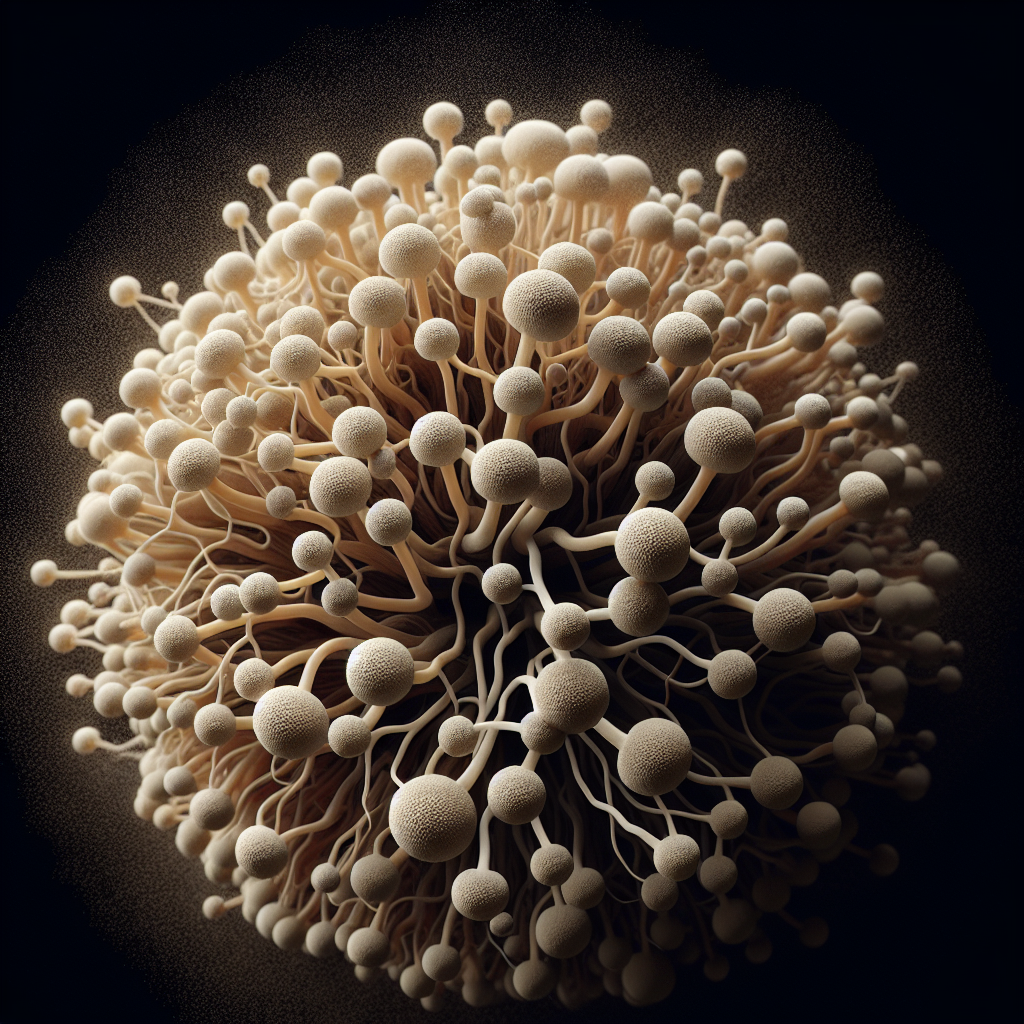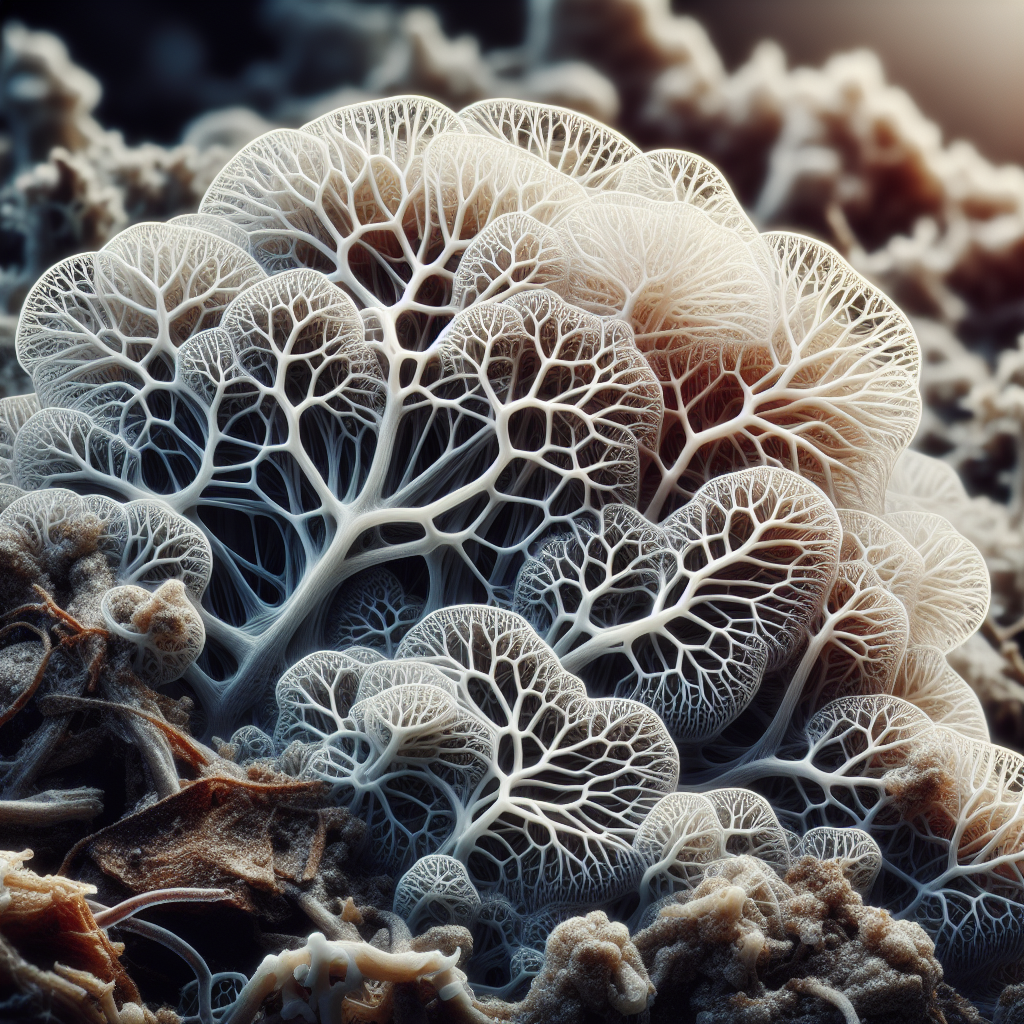In this vital exploration titled “Understanding the Value of Mycelium as an Adaptation for Fungi,” you will gain comprehensive insight into the imperative role mycelium plays in the life cycle of fungi. Grappling with its complexity, the discourse focuses on how this less known component proves to be a phenomenal adaptation that equips fungi with enhanced survival strategies and competitive advantages. The crux of the discourse pivots around reinforcing your conceptual understanding of the dynamic world of fungi and imprinting upon your mind the unreserved significance of the mycelium.
Introduction to Mycelium
The world of fungi is fascinating, and one of its most engaging aspects is the mycelium.
Definition of Mycelium
In the simplest terms, the mycelium is the part of a fungus you usually do not see. It is an underground network of filament-like structures, referred to as hyphae, from which mushrooms and other fungi sprout. Each hypha is a tube filled with cytoplasm, containing nuclei and vacuoles.
Basic Structure of Mycelium
The mycelium’s structure resembles a complex web, reaching out to the corners, cracks, and crevices in the soil. This design allows for effective nutrient absorption, with each filament working to consume and integrate nutrients from the environment.
Mycelium Vs Mushroom
Often, people mistake mycelium and mushroom as two separate organisms. However, mycelium and mushroom are components of the same fungus, but they serve different functions. While the mushroom is the fruiting body of a fungus, responsible for reproduction and spore dispersal, the mycelium is the extensive, root-like system that supports the growth and sustenance of the fungus.
Basic Biology of Fungi
Fungi form one of the five kingdoms in the classification of living things, standing distinctly separate from animals, plants, and bacteria.
Overview of Fungi
Fungi, in their diverse forms, thrive in almost every habitat. These eukaryotic organisms are primarily saprotrophic decomposers, meaning they obtain nutrients by feeding on dead or decaying organic matter.
Role of Fungi in Ecosystem
In an ecosystem, fungi play a crucial role, aiding in essential processes like nutrient and carbon cycling. They decompose organic material and make the nutrients available again to other organisms. Moreover, many fungi form symbiotic relationships with plants, enhancing their nutrient uptake.
Distinct Features of Fungi
Distinct from plants, fungi lack chlorophyll and cannot carry out photosynthesis. Instead, they acquire nutrients through absorption. A unique feature of fungi is their cell walls, composed of chitin instead of cellulose, which is found in plants.
Mycelium as an Adaptation
Mycelium serves as a valuable adaptation in the life cycle of fungi and has significant implications for their survival and propagation.
Evolutionary Importance of Mycelium
The evolution of the mycelium structure has given fungi a competitive edge in adaptability and survival in diverse habitats. The intricate network allows for efficient absorption of nutrients, even from scarce resources.
Advantages of Mycelium Structure for Fungi
From a survival standpoint, the structure of mycelium offers a multitude of advantages to fungi. It provides a tenacious grip in different substrates, it maximizes the surface area for nutrient absorption and imparts resilience to adverse conditions.
Role of Mycelium in Fungi Survival
The mycelium contributes to fungal survival not just by facilitating nutrient uptake but also by aiding in reproduction and forming protective structures. Through the mycelium, fungi can reproduce both sexually and asexually to help ensure their survival.

Mycelium and Nutrient Acquisition
The pivotal role of mycelium in the nutrient acquisition for fungi cannot be overstated.
Mycelial Networks and Nutrient Absorption
Owing to the complex web-like structure of mycelium, even minute resources scattered in the environment can be exploited effectively. These networks operate with remarkable efficiency, reaching out to nutrients, absorbing them, and transporting them back to where they are needed.
Mycelium in Nutrient Cycling
Mycelium plays an integral part in nutrient cycling, primarily by decomposing organic matter. In doing so, it releases nutrients back into the soil, making them available for uptake by other organisms.
Mycelium and Soil Stability
One critical function that mycelium performs is to lend stability to the soil. The mycelial network forms a binding network in the ground, preventing soil erosion and promoting soil fertility, leading to a sustainable ecosystem.
Mycelium and Fungal Symbiosis
Symbiosis involves different organisms living together in a mutually beneficial relationship. Fungi, especially those that form mycelium, often take part in such associations.
Mycelium in Mycorrhizal Relationships
Many fungi form symbiotic relationships with plants, known as mycorrhizal associations. In such instances, the mycelium integrates with the plant roots, increasing the plant’s absorption area for water and nutrients. In return, the fungus receives sugars and other organic substances from the plant.
Influence of Mycelium in Lichen Formation
Lichens, composed of a fungal partner and a photosynthetic partner (either algae or cyanobacteria), realistically portray the impact of mycelium in symbiosis. In this symbiotic relationship, the mycelium forms the bulk of the lichen’s body, providing shelter and moisture for the photosynthetic partner.
Mycorrhizal Networks and Plant Health
Mycorrhizal networks formed by the mycelium can significantly impact plant health. They improve the plant’s access to vital nutrients and protect them from pathogens. This, in turn, results in superior growth and increased crop yields.
Mycelium and Fungal Reproduction
The mycelium plays a crucial role in both asexual and sexual reproduction in fungi.
Role of Mycelium in Spore Formation
Mushrooms, which sprout from the mycelium, serve as the primary means of spore production and dispersal. Each mushroom can generate millions of spores that, upon finding suitable conditions, can germinate and grow into new mycelium.
Mycelial Growth and Asexual Reproduction
Mycelium also contributes to the asexual reproduction of fungi through simple growth and expansion. In some fungi, small portions of the mycelial network could develop into new organisms, a process known as vegetative propagation.
Mycelium and Sexual Reproduction in Fungi
In certain circumstances, mycelium can also enable sexual reproduction for fungi. Two genetically different mycelia can fuse and collaborate to produce structures that eventually form sexual spores.
Mycelium and Fungi Defense Mechanisms
The mycelium is not only for feeding and reproduction; it also provides efficient defense mechanisms for fungi.
Mycelium and Biofilm Formation
Fungal biofilms formed by mycelia serve as a defence against hostile conditions. Biofilms essentially act as a protective layer for fungi, offering resistance against antibiotics and antifungal agents.
Mycelium in Fungal Immunity
Through the mycelium, fungi can communicate and coordinate their responses to environmental stimuli. These coordinated responses could enhance resistance to disease and other environmental pressures.
Role of Mycelium in Fungal Resistance
The mycelium plays a substantial role in bestowing overall resistance to fungi. It enables adaptations, produces protective structures, and releases compounds toxic to potential invaders.
Impact of Mycelium on Human Health
Mycelium can influence human health, both positively and negatively.
Mycelium and Human Pathogenic Fungi
Certain pathogenic fungi, supported by their mycelium, can invade the human body and cause diseases. These illnesses range from superficial skin infections to potentially life-threatening conditions.
Role of Mycelium in Antifungal Resistance
Mycelial fungi can develop biofilms leading to increased resistance to antifungal medicines. This resistance complicates the treatment of fungal infections, especially in immunocompromised individuals.
Mycelium and Fungi-mediated Allergies
Many people can be allergic to spores released by fungi. As the mycelium aids in the prolific production and dissemination of these spores, it indirectly contributes to the propagation of fungal allergies.
Mycelium in Biotechnological Applications
There is increasing interest in the use of mycelium in various biotechnological applications due to its unique properties.
Use of Mycelium in Bioremediation
Mycelium’s ability to absorb and incorporate nutrients lends utility in bioremediation efforts. Mycelium can absorb and break down harmful pollutants in the environment, a process known as mycoremediation.
Mycelium in the Production of Biofuels
Fungi, particularly the mycelium, are being explored for the production of biofuels. The mycelium can break down complex organic matter into simpler substances, which can then potentially be used in the production of bioenergy.
Mycelium-based Biofabrication and Biocomposites
With its natural binding properties and biodegradability, mycelium is increasingly being used in the production of biofabrication and biocomposites. These applications can range from packaging materials to construction materials and even leather-like products.
Future Areas of Research in Mycelium
There are several promising areas where further research into mycelium can lead to breakthroughs.
Mycelium and Climate Change
Understanding how mycelium influences carbon storage in soil can contribute to strategies to mitigate climate change. Moreover, mycelium’s role in decomposition and nutrient recycling can tie in closely with ecosystem responses to global warming.
Investigating the Genetic Basis of Mycelial Networks
Deciphering how mycelial networks form and function at a genetic level could unlock many of their mysteries. This research could also help address challenges associated with fungal diseases in agriculture and medicine.
Mycelium in Space Exploration
One intriguing area of ongoing research is the use of mycelium in space exploration. Given its ability to recycle waste and produce oxygen, mycelium could potentially be harnessed for life support systems in long-term space travel and extra-terrestrial colonization.
In conclusion, mycelium is a fascinating and multifunctional part of a fungus, and its significance reaches beyond the realm of biology. Mycelium’s importance as an ecological pillar underlines its role in maintaining the health of ecosystems. With science’s increasing understanding of mycelium’s versatility, it is poised to gain even more attention in diverse fields in the future.
